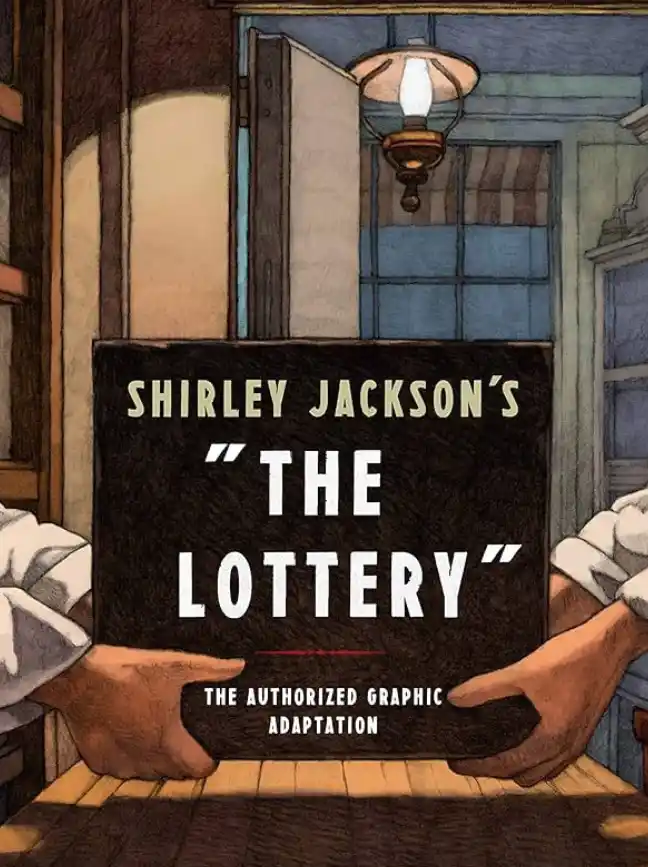CHAPTER SEVEN The fight against the red front
In 1919 and 1920, and again in 1921, I personally attended the so-called bourgeois rallies. They always repulsed me as much as I did in my childhood with the prescribed spoonful of codfish oil. It’s supposed to be eaten, and it’s said to be very good, but its taste is horrible.
I have met prophets of a bourgeois ideological outlook, and I am not surprised, but rather understand now, why they attach no importance to the spoken word. At that time, I attended meetings of democrats, German nationalists, the German Populist Party, and the Bavarian Populist Party (the Catholic Party of Bavaria). What was striking at first glance was the homogeneity of the audience, which was composed almost exclusively of members of the respective party. The whole, lacking any discipline, resembled more a club of bored card players than a meeting of the people who had just suffered a great revolution. The speakers themselves did their best to maintain this peaceful atmosphere. They delivered speeches, or rather, read speeches in the style of a witty newspaper article or a scientific dissertation, avoiding any strong expressions and only occasionally letting slip a lame academic joke, at which the members of the board laughed conspicuously, not outright, but measuredly and with appropriate restraint. I once attended a meeting in the Wagner Hall in Munich to commemorate the Battle of the Nations in Leipzig. The executive committee was gathered on the platform: on the left, one with a monocle, on the right another with a monocle, and in the middle, one without a monocle. All three were dressed in frock coats, giving the impression that it was either a court of justice about to pronounce a death sentence or a solemn baptism; in any case, it seemed more like a religious ceremony than anything else. The intended speech, which in print would perhaps have produced a better effect, produced a disastrous one, for, barely three-quarters of an hour later,
the entire audience was as if under the influence of a hypnotic dream.
*
* *
Certainly, compared to such gatherings, the National Socialist assemblies were not “peaceful” assemblies. They clashed with the currents of two different ideological conceptions and concluded not with mechanically sung patriotic songs, but with the fanatical explosion of national and racial sentiment.
From the very beginning, it was necessary to establish rigorous discipline in our meetings and to ensure absolute authority for the assembly leader. For what we presented was not the lax chatter of a bourgeois “lecturer,” but something that, in substance and form, was always likely to provoke a response from our adversaries. And there were adversaries in our assemblies.
How often they came in tight groups, led by a few agitators, their faces reflecting the conviction: “Today we will destroy you.” And how often they demanded everything from a son, and only the singular energy of the assembly leader and the brutal determination of those in charge of maintaining order could thwart our adversaries’ plans.
And they had enough reason to feel provoked.
The red color of our proclamations was enough to attract them to our assembly venue.
The ordinary bourgeoisie was extremely indignant at the thought that we too had seized the red from the Bolsheviks, and believed they saw a double meaning in this.
We had chosen the color red for our proclamations after careful and profound reflection, seeking to provoke those on the left, to stir their anger, and thus induce them to attend our meetings, even if it was only with the intention of annoying us; but in this way, they gave us the opportunity to make them listen to our word.
How amusing it was for us, in those years, to witness firsthand, in the constant change of tactics of our adversaries, the disorientation and impotence that dominated them. Appeals were made to the “class-conscious proletariat,” inviting them to attend our assemblies en masse to crush the representatives of “monarchist and reactionary agitation” with the proletarian fist.
Our meetings were already packed with workers three-quarters of an hour before they began. They were like a powder keg, capable of exploding at any moment, with the fuse already lit. But things always turned out differently. These people entered as adversaries and left, if not convinced of our cause, at least imbued with a reflective and even critical spirit regarding their own doctrine.
When, after two, three, and often eight or ten meetings, it had become clear that sabotaging our gatherings was easier in theory than in practice, and that the outcome of each of our meetings meant a further dismemberment of the Red forces, the opposite slogan was launched: “Proletarians, members, men and women! Do not attend the meetings of the National Socialist agitators!” The same eternally vacillating tactic could also be observed in the Red press. Suddenly, they tried to ignore us completely, only to convince themselves of the ineffectiveness of this method and resort again to the opposite procedure. They had begun by treating us as true criminals against humanity. Article after article, emphasizing our alleged criminality, always documenting it anew with stories of scandals and other things, though all fabricated from A to Z, completed the defamatory work.
So I adopted the view that no matter what—whether they mocked or disowned us, whether they presented us as hacks or criminals—the important thing was that they mentioned us, that they constantly focused on us, and that, little by little, we would emerge in the eyes of the workers as the only power they were fighting against. What we truly were and what we truly wanted, we would one day have to show the Israelite pack of press.
One of the reasons why our assemblies were not directly sabotaged at the time was, of course, also the incredible cowardice of our adversary leaders. In every critical situation, they simply deployed a few young men ahead of them while they waited outside the premises for the outcome of the planned sabotage.
At that time, we were forced to ensure the maintenance of order at our meetings ourselves, since we could never count on the protection of the authorities; on the contrary, we knew from experience that
experience that such protection always favored the troublemakers, since the only effective result of the intervention of the authorities, that is, the police, was the dissolution of the assembly, that is, its closure. And this was, in fact, the intent and purpose of the enemy saboteurs. In truth, the police have become a school of thought for a practice that, due to its illegality, constitutes the most monstrous thing imaginable. When, through threats, the authorities realize that there is a danger of a meeting being sabotaged, instead of arresting the instigators, they prohibit innocent people from holding the assembly; a procedure of which the ordinary type of police authority is very proud, calling it a “preventive measure to avoid a violation of the law.”
In connection with all this, the following must also be considered: Any assembly protected solely by the police discredits its organizers in the eyes of the great masses.
Our young party had to, therefore, look out for itself, defend itself, and single-handedly destroy the terrorism of its adversary.
Two conditions guaranteed the safety of our assemblies: I) An energetic and psychologically appropriate leading hand.
II) The presence of an organized group to maintain order.
When we National Socialists held a meeting back then, we ourselves, and no one else, were the rulers. More than once, it happened that a handful of our comrades heroically prevailed over a furious and violent mass of Red elements. Surely, in the end, that handful of fifteen or twenty men could have been subdued, but the others knew very well that before then, double or triple their number would have been crushed. And they didn’t want to risk this.
How my boys’ eyes shone when I explained to them the necessity of their mission and emphasized that the greatest wisdom in the world will always be useless unless backed by a force to protect and defend it, and that the sweet goddess of peace can only appear at the side of the god of war, as every great work of that peace needs the protection and support of force. I managed to inspire them with a much more vivid idea than they had of compulsory military service. Not in the stereotypical sense of the spirit of old and ossified officials serving the dead authority of a State that had ceased to exist, but with a full consciousness of the duty that the sacrifice of
his life for the existence of all his people, at all times and in all cases.
And how those boys acted afterwards!
Like a swarm of wasps, they descended upon the disturbers of our assemblies, regardless of their numerical proportion, without fear of being hurt, ready for any sacrifice and always full of the great idea of opening the way for the sacred mission of our movement.
By the summer of 1920, our organization for maintaining order was gradually taking shape, and by the spring of 1921, companies of 100 men, further subdivided into groups, were formed. This proved indispensable because, in the meantime, the Party’s assembly activity had been steadily increasing.
*
* *
The organization of our order troops brought with it the solution to a very important issue: Until then, the movement had no special insignia, much less a party flag. The absence of such symbols was not only a temporary inconvenience, but also unacceptable for the future. The inconvenience lay, above all, in the fact that our coreligionists had absolutely no external symbol that would reveal their belonging and, moreover, would characterize the movement with a banner as a symbol opposed to the emblem of the International.
More than once in my youth, I had occasion to realize and instinctively grasp the enormous psychological significance of such a symbol. After the war, I saw a Marxist rally in front of the royal palace in Berlin. A sea of red flags, red armbands, and red flowers gave this demonstration of approximately 120,000 people a very imposing outward appearance, and I myself felt and understood how easily the common man is swayed by the seductive magic of such a grand-looking spectacle.
The bourgeois class, which politically neither has nor truly represents any ideological conception, therefore lacked a symbol
own; it consisted of “patriots” and bore the colors of the post-war Reich everywhere.
The black-white-red flag of the former empire was again adopted by the so-called national bourgeois parties.
There is no doubt that the symbol of an era dominated by Marxism under inglorious conditions and circumstances can hardly serve as an emblem for destroying that same Marxism in its name. However sacred and beloved the ancient colors were to every good German who fought beneath their folds and witnessed the sacrifice of so many, those colors of unique beauty and fresh, vibrant workmanship were not suitable as a symbol of a struggle for the future.
Contrary to bourgeois politicians, I always held the view within our movement that it was truly fortunate for the German nation to have lost the old flag. From the bottom of our hearts, we should thank fate for having chosen to preserve our glorious war flag of all times from the disgrace of serving as a bedsheet for the most shameful prostitution.
We National Socialists cannot see in the old Reich flag a symbol expressive of our own activity, for we do not aspire to revive the Empire that fell victim to its own defects, but rather to establish a new state. The movement that, in this sense, now fights against Marxism had to bear the symbol of the new state on its flag ever since.
The question of our flag, that is, its appearance, concerned us intensely at that time. We received well-intentioned suggestions from all sides, but they were of no practical value. For my part, I advocated the preservation of the old colors, not only because, as a soldier, they are the most sacred thing in life, but also because of their aesthetic effect, as they harmonize better than any other combination with my own way of feeling. After countless experiments, I myself was able to define a definitive form: on a red background, a white disc, and in its center, a black swastika. Likewise, after extensive experimentation, I was able to find an appropriate relationship between the dimensions of the flag and the disc, and between the shape and size of the swastika. And so it remained.
Immediately armbands of the same combination were ordered to be made for our order troops, that is, a red armband on
which shows the white disc and the black swastika.
The party’s insignia was also created following the same guidelines.
In the summer of 1920, we displayed our flag for the first time. It was a perfect match for the nature of our nascent movement: both were young and new.
And it is truly a symbol! Not only because through these colors, ardently loved by us and which won so much glory for the German people, we testify to our respect for the past, but because they were also the best embodiment of the movement’s purposes. As national socialists, we see our program in our flag. In red, the social idea of the movement; in white, the nationalist idea; and in the swastika, the mission to fight for the victory of the Aryan man and, at the same time, for the triumph of the idea of productive labor, an idea that is and always will be anti-Semitic.
Two years later, when our order troop had become an “assault section” (SA Sturm Abteilung) comprising many thousands of men, it became necessary to give this fighting organization of the new ideological conception a special symbol of victory: the banner.
*
* *
At that time, apart from the Marxist parties, no party, especially of a national character, existed that could boast of organizing popular rallies as impressive as ours. The Münchener-Kindl-Keller hall in Munich, which can hold five thousand people, was more than once packed to overflowing; there remained only one venue, whose enormous capacity had made us hesitant to even use it as a meeting place: the Circus Krone.
In the final days of January 1921, serious incidents arose again for Germany. The Paris Convention, which obligated the Reich to pay the absurd sum of one hundred billion gold marks, was to be enforced in the form of the London ultimatum.
For this reason, a cooperative of so-called nationalist associations, which had existed for a long time in Munich, had wanted to
organize a general protest rally. Meanwhile, the days passed imperceptibly; the major parties hadn’t taken the slightest note of the tremendous event, and the cooperative itself couldn’t bring itself to set a date for the planned demonstration.
On Tuesday, February 10, 1921, I urgently demanded a definitive decision. I had been asked to wait until Wednesday, and that day I insisted on obtaining clear information about whether and when the meeting would finally take place. The response was again evasive and vague. It was said that the “intention” was to hold a meeting of the cooperative the following Wednesday.
Faced with such a state of affairs, my patience had run out, and I ended up organizing the protest meeting myself. On Wednesday at noon, I typed the text of the proclamation in ten minutes and at the same time arranged for the Krone Circus venue to be rented for the following day, Thursday, February 3.
At the time, this meant exposing themselves to enormous risk; not only because it was doubtful they would fill such a huge venue, but also because of the danger of sabotage. But one thing was certain: failure could set the movement back several years.
We only had one day to post the proclamations, that is, Thursday itself.
Unfortunately, it was already raining in the morning, and it seemed well-founded to fear that in such circumstances, many people would prefer to stay home rather than attend a meeting in the rain and snow where there would possibly be deaths and injuries.
Two trucks, which I hired, were decorated in red and provided with some of our flags; each truck was manned by fifteen or twenty coreligionists, with orders to diligently patrol the city streets, distribute leaflets, in short, spread propaganda for the evening rally. This was the first time that trucks with red flags were seen circulating, driven by non-Marxist elements.
At seven o’clock at night, the circus venue was still not crowded enough. I received phone calls every ten minutes, and I felt a little uneasy. However, more favorable information soon arrived.
When I entered the spacious hall, I experienced the same feeling of joy I had felt a year earlier when our first meeting was held in the Hofbräuhaus banquet hall in Munich. I had to make my way through the packed audience, and when I reached the platform, I realized the magnitude of the success. More than 5,600 tickets had been sold, and if we added the number of unemployed, poor students, and members of our guard charged with maintaining order, the attendance probably exceeded 6,500.
“Future or ruin.” That was the theme of my lecture. I spoke for approximately two and a half hours, and already, after the first thirty minutes, I knew the rally would be a tremendous success, because I felt connected to those thousands of people. From the first hour on, the applause, with increasingly loud spontaneous exclamations, began to interrupt my speech, only to subside after the second hour, and the audience fell into that religious silence I must have experienced so many times in that same venue on subsequent occasions. As soon as I had spoken the last word, the popular enthusiasm erupted in patriotic fervor, with the national anthem “Deutschland ubre alles.”
The bourgeois gazettes published photographs and commentaries, mentioning only that it had been a “national” demonstration and, in their “characteristic modesty,” omitting to mention the names of the organizers.
After that initiation in 1921, I considerably intensified our assembly activities in Munich, choosing to hold not just one meeting, but often two or even three per week, in the summer and late fall. Our meetings were always held at the Krone Circus, and we were deeply satisfied to note that each time we were equally successful.
The result was a growing support for the movement and a significant increase in the number of party members.
*
* *
It is only natural that in the face of such successes our adversaries did not remain inactive. And so they resolved to carry out a final
effort an act of terrorism that would definitively put an end to our assembly activity.
For the decisive meeting, they had chosen one of our meetings in the Hofbräuhaus banquet hall, where I was to speak. Indeed, on November 4, 1921, between 6 and 7 p.m., I received the first concrete information announcing that our meeting that evening would be sabotaged at all costs.
It was due to an unfortunate circumstance that we were unable to have such communication earlier.
That same day, we had vacated our venerable office on Sterneckergasse in Munich to move to another location. That is, we had left the old premises, without yet being able to move into the new one, as preparatory work was still being done there. The telephone was also unavailable, which is why many attempts to inform us by phone about the planned sabotage proved in vain.
The consequence of this was that our assembly that night would be protected only by a small group of our security guards. Their number did not exceed forty-six. Since our alarm system was not yet sufficiently developed, it would have been impossible to have adequate reinforcements within the hour at night.
When I arrived at the foyer of the Hofbräuhaus at a quarter to eight, there was no doubt about the intentions of our adversaries. The hall was packed, so the police sealed off the entrance. Our enemies, who had taken great care to arrive very early, filled the hall, while our followers remained mostly outside. The small SA group waited in the foyer, and I ordered the forty-six men who comprised it to form up. I told my men that that evening, for the first time, they would surely have to prove, through blood and fire, their loyalty to the movement, and that none of us should leave the premises unless we were brought out dead. I said that I personally would remain in the hall and that I could never imagine a single one of them abandoning me. Finally, I emphasized that if I saw any of them behaving like a coward, I would personally tear off their armband and party insignia. I then urged them to react immediately to the slightest attempt at sabotage, without forgetting for a moment that the best form of defense is always attack.
The exclamation “Heil!” uttered three times, more vigorously than ever, was the answer to my words.
Once inside the room, I saw the situation with my own eyes. The audience was crowded together, already waiting for me with piercing gazes. Countless faces filled with hatred were turned toward me, while others hurled insults at me, followed by ironic gestures. They were convinced of their numerical superiority and wanted to demonstrate it.
Despite everything, the assembly was opened and I began my speech.
After about an hour and a half – I had been able to speak during that time despite the constant interruptions – a small psychological error I made when answering an interruption, which I myself realized as soon as I had responded, gave rise to the signal for attack.
Furious shouts and suddenly a man jumps onto a chair and exclaims: “Freedom!” At the given signal the “champions” of freedom began their work.
A few moments later, the roar of an immense human horde dominated the place, with countless beer glasses flying like howitzers, and in the middle of it all, the crash of chairs, shattering glasses, shrill screams, and whistling.
The spectacle was wild.
I stood at my post and from there I could observe how all my boys performed their duty admirably.
The dance had barely begun when my “assault men,” as I called them from then on, entered. Like wolves, in groups of eight or ten, they fell successively upon their adversaries, and little by little they were overwhelmed and driven from the room. Less than five minutes had passed before I saw that almost all of my men were bleeding and wounded. How many of them I had been able to recognize at that very moment. At their head was my brave Maurice, also my current private secretary Hess and many others who, although seriously wounded, always attacked again as long as they could remain on their feet. In one corner, at the back of the room, there was still a considerable block of adversaries who put up a stubborn resistance. Unexpectedly, two revolver shots fired from the entrance of the room detonated, and with this a tremendous exchange of fire began. From that moment on, it was impossible to determine the source of the shots, but one thing I could clearly establish: from that instant the fighting ardor of
My bleeding boys had reached their climax, finally throwing the last troublemakers out of the room, defeated.
Approximately 25 minutes passed. The room felt as if a grenade had exploded. Many of my wounded coreligionists were urgently treated, others were transported by ambulance, but despite everything, we had remained in control of the situation.
Hermann Esser, who was chairing the meeting that evening, declared: “The meeting continues. The speaker has the floor.” And I continued speaking.
We had already adjourned the meeting when a police officer rushed in, very excited, waving his arms nervously and shouting, “The meeting is adjourned.”
I had to laugh unwillingly at such a truly police-like display.
Truly, we had learned a lot that night and our adversaries themselves never forgot the lesson they had learned.








